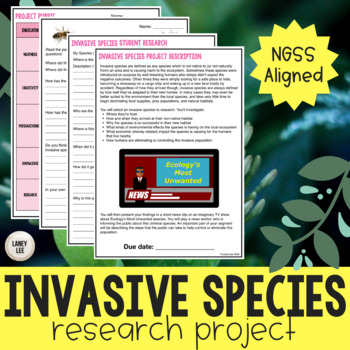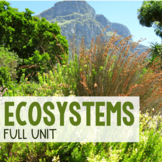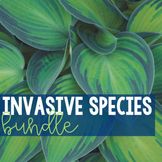Invasive Species Ecosystems Project
- PDF
- Google Apps™
- Easel Activity

What educators are saying
Also included in
- Is lesson planning just too much on top of teaching on top of grading on top of classroom management on top of *ahem* living your life? Get all the guidance you need to teach a comprehensive, no-prep ecology unit either in person, hybrid, or virtual with my all inclusive unit bundle! This unit wilPrice $68.00Original Price $98.00Save $30.00
- Is lesson planning just too much on top of teaching on top of grading on top of classroom management on top of *ahem* living your life? Get all the resources you need to teach invasive species either in person, hybrid, or virtual with this great value-for-money bundle! These resources will save yoPrice $6.00Original Price $8.00Save $2.00
- Is lesson planning just too much on top of teaching on top of grading on top of classroom management on top of *ahem* living your life? Get all the guidance you need to teach a full-year science course in person, hybrid, or virtual with my all-inclusive curriculum bundle! This curriculum will savePrice $410.00Original Price $583.99Save $173.99
Description
Introduce ecosystems, or wrap up a unit with this fun project based learning activity!
This assessment ties together several ecology topics such as:
- resource availability
- interactions of organisms
- cycling of matter and energy
- competition
- populations are affected by various physical and biological components of ecosystems.
Students will investigate how an invasive species of their choice has impacted its non-native ecosystem as well as describing planned solutions for maintaining biodiversity.
After students have completed their research, they will film a segment of an imaginary television show called Ecology’s Most Wanted. In the video they will act as a news anchor and cover all the major information about their species and its impact on the ecosystem.
A lot of the submissions I've received from my own students for this project have been super impressive as far as creativity and general hilarity. You won't want to miss this!
Who is this resource for?
This resource can be used by classroom teachers, tutors, and parents of students in grades 6-9.
How Can I Use this Resource?
- Formative or Summative Assessment
- Inquiry based instruction
- Creation of Independent Work Packet for students who are not able to be present for direct instruction.
- Extension activity for early finishers or for students who show a special interest in the topic
What's Included?
- Link to digital version of all student pages
- A short Introduction Activity covering honey bees and stink bugs. A short reading plus student comprehension questions are included. I highly recommend completing this activity prior to beginning the project to clarify what an invasive species is.
- Project Description sheets, both expanded and specific, outlining the projects requirements with spaces to fill in due dates.
- Invasive species list and student signup sheet
- 3 pages designed to Guide Research for students
- Source Organizer pages to support good research and citation skills
- Project Rubric
Purchase includes a printable PDF file in color. On page 2 of this resource you will find a link to a student friendly Google Slide version of this file. You will be able to copy this file and use it with Google Classroom or any other paperless initiative.
Please take a look at the preview file & video to see more of this resource.
More questions?
Email me at laneyleeteaches@gmail.com
-------------------------------------------------------------------------------------------------------------------------------
Other related resources:
- Invasive Species Guided Reading
- Biome Webquest
- Water Cycle Guided Practice
- Symbiosis Guided Reading
- Food Webs & Energy Pyramids Practice
- Food Webs Online Activity
- Biome Shadowbox Project
- Biosphere Project
- FULL ECOLOGY UNIT (SAVE 30%)
-------------------------------------------------------------------------------------------------------------------------------
To stay updated on sales and new products, please follow my store:
Connect and chat with me!









